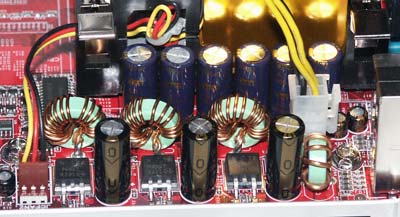Biostar iDEQ 200T: Great Performance & Brilliant Design
by Wesley Fink on September 29, 2003 10:24 PM EST- Posted in
- Systems
Biostar iDEQ 200T: P4TBA Motherboard
| Motherboard Specifications | |
| CPU Interface | Socket-478 |
| Chipset | Intel 82865PE MCH (North Bridge) Intel ICH5R (South Bridge) |
| Bus Speeds | 100 MHz to 255 MHz (in 1MHz increments) |
| AGP/PCI Speeds | Disabled, Fixed at 66 |
| Core Voltages Supported | Default, +2.5%, +5.5%, +8.1% |
| AGP Voltages Supported | None |
| DRAM Voltages Supported | Default, 2.5 to 2.8 in 0.1V increments |
| Memory Slots | 2 x 184-pin Dual-Channel DDR DIMM Slots |
| Expansion Slots | 1 AGP 8X Slot 1 PCI Slot |
| Onboard Graphics | Intel 865G Extreme Graphics |
| Onboard RAID | Intel ICH5R SATA RAID 0/1 |
| Onboard USB 2.0/IEEE-1394 | Eight USB 2.0 supported through ICH5R VIA VT6307 FireWire Controller |
| Onboard LAN | Realtek 8100B 10/100 |
| Onboard Audio | CMedia 9339A 5.1 Digital Audio With SPDIF Optical In & Out |
| Onboard Serial ATA | Two Standard SATA connectors ICH5R |
As in any computer system, the motherboard controls the features and options available on the system. Comparing the Biostar SFF P4TBA motherboard to the SFF Shuttle FB65 motherboard or any recently reviewed Springdale, the Biostar provides all the features, memory timings, and adjustments that you will need to get the most from 800FSB operation. It also has the options for modest overclocks, but does not provide the kind of FSB range or AGP/PCI locks to take a 2.4C to 300FSB, for example. Since Biostar is using the 200W Enhance power supply, the available settings are well-balanced with the system capabilities. It is likely that Biostar would need to increase the PS to 220W or so in order to provide overclocking options comparable to the Shuttle or the top full-size 865 motherboards. Like Shuttle, Biostar does not implement any of the undocumented PAT features that we have seen used on some 865 full-size boards. However, the missing PAT schemes also do not affect performance very much. It appears the missing PAT also contributes to the rock-solid stability that we experienced in testing the iDEQ 200T.
We wish the small motherboards could find a way to use the 4 DIMMs allowed in the Intel 865 design, but Biostar setup the 2-DIMM slots wisely as dual-channel to make the most of the performance capabilities of the Intel 865PE chipset. While memory is limited to a maximum of 2GB, there are not many who would want to use more than 2GB in an SFF system. Most of the full-blown Athlon64 systems just introduced have this same 2GB memory limit — even with 3 slots.

In this view of iDEQ 200T motherboard, you can clearly see the 3 coils used in the 3-phase power design. One of the reasons that these small systems perform so well with small power supplies is the careful attention to power regulation on the motherboard. Like the Shuttle we recently reviewed, Biostar has also found a way to handle most anything that you can throw at the iDEQ 200T, despite the tiny 200-watt power supply.










23 Comments
View All Comments
Anonymous User - Tuesday, September 30, 2003 - link
50-60dBA is conversation level volume. Of course, its white noise and relatively low frequency. I have serious doubts that your tower is 30dBA (except for the advertisement that says it is). about 35 dba is on the threshold of a whisper. Unless you live in a soundlab your ambient noise level should be around 30dba.Anonymous User - Tuesday, September 30, 2003 - link
Yeah, #1 (uh.. and #2, doublepostage?) is right. 60dB is fscking loud, as anyone who's owned a Black Label can attest. My tower used to put out ~40 decibels of noise, and it was a touch loud (didn't bother me much though). "So?" you say? 50 decibels is 10 times 40 decibels. The wonders of non-linear scales.Anonymous User - Tuesday, September 30, 2003 - link
Am I missing something here? How can 50-60 dBA be considered quiet? That's freight train level noise for a PC, especially with the quieter towers coming in at about 30 dBA.